Making your joints burn slower is all about proper rolling and setting yourself up for success. A beautiful joint is likely to be well packed, ensuring no weed goes to waste and ensuring the smoke burns evenly. Below, we’re going to show a ton of great tips on how to make a joint burn slower.
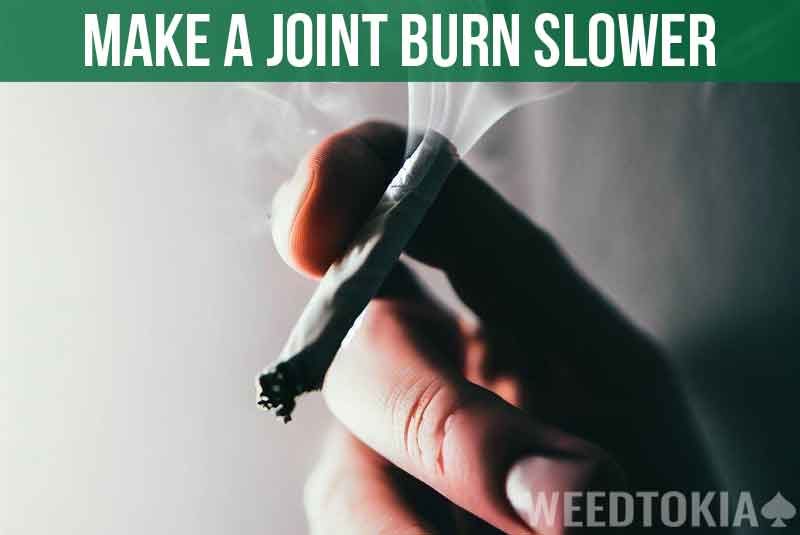
Seeing how short your smoking session was after having smoked a joint is one of the worst feelings. There is a common misconception that this is just the way it works. It goes without saying that someone who is high is unlikely to think about the logistics of the burn rate.
Several factors can help the joints burn slowly. Rolling joints slowly and properly can help them burn evenly, but if they are infused with special products like honey and hash oil, they will burn longer and last longer. You can roll joints that burn slowly by following the tips below.
Table of Contents
Tips to Making a Join Burn Slower
1. Grind Your Weed Correctly
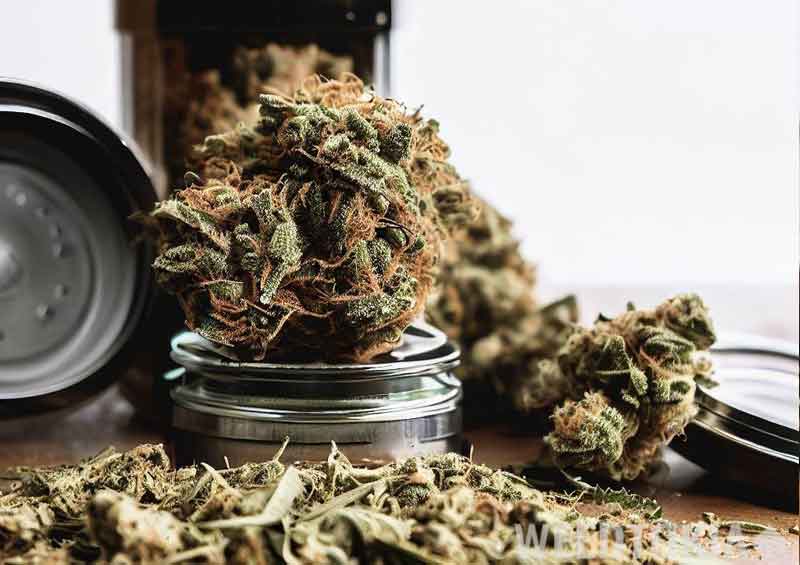
If you want your cannabis to burn evenly and maintain its flavor, grind it using a good grinder. It is better to use steel than plastic. The dried flower should not be overfilled in the grinder, and it should be spread out to prevent clumping. There should be small pieces of ground material, but it should not be powdery.
To have a joint that burns slowly, cannabis needs to pass through a grinder.
By hand, you’ll get uneven pieces that’ll ruin your smoke. This makes your joints feel rough and burn fast. To avoid this, grind your weed finely and make sure that it’s even to slow down the burn.
Don’t Get Lazy: We’ve all been there. It’s almost time to light up. You pull out all your papers (or your bong) and prepare to light up—except something is missing. There is no grinder in sight. You pause for a brief moment. Even if you don’t have a standard grinder, use a good weed grinder alternative.
2. Choose Your Paper Wisely
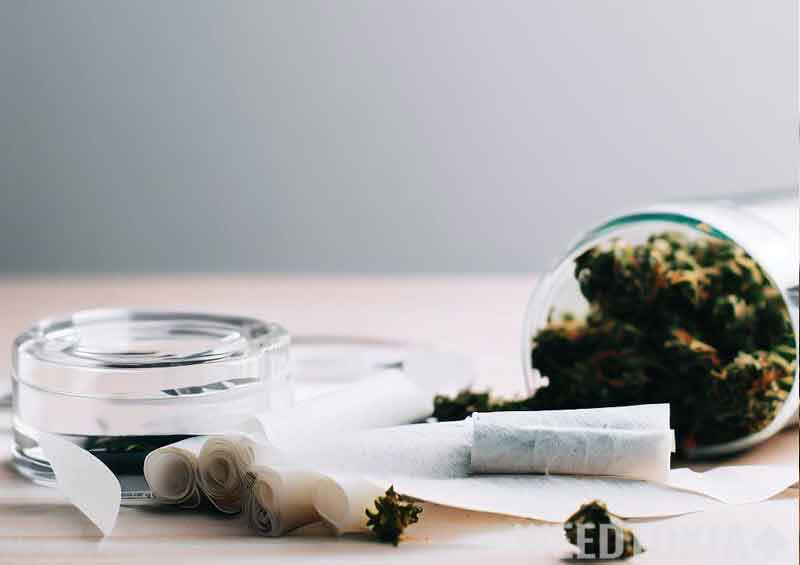
Your smoking experience can be improved with good rolling papers. The skill required for a well-rolled joint cannot be substituted for fine paper, and learning how to roll impeccable joints can take years. Despite the recent boom in vaporizers, smoking marijuana is still the most common way to get cannabinoids and smell all the great smells it has to offer.
Rolling papers are traditionally made of wood pulp, which has pros and cons when it comes to smoking. In the last two decades, cannabis-focused, health-conscious rolling papers have entered the market, with transparent cellulose, rice, and hemp rolling papers being produced to satisfy the demands of a more conscious audience.
Rolling papers come in a variety of unique varieties that appeal to a variety of smokers. Among such factors are taste, thickness, and the speed at which the paper burns.
In general, the thinner the rolling paper, the slower the joint will burn. It is best to buy thin or ultrathin hemp paper. Burning these papers is a more pleasant experience because they tend to burn slower.
Classic Wood Pulp Paper
The most popular rolling papers are wood pulp ones, and that’s been true for more than a century. It’s even possible to blend them with other fibers, and their texture makes them easy to work with. The old types are thicker, even if they’re available in different thicknesses – bleached or unbleached.
The white wood pulp papers are bleached, but the brown ones aren’t. Paper made from wood pulp is solid, and the paper’s texture is handy for beginners because they hold their shape even in a little humidity or shaky hands. Papers made from wood pulp have a medium burn rate.
Rice Paper
The best rice papers are made from all-natural ingredients, which means they’re basically rice that’s been processed and pressed. Typically, these rolling papers are thinner than others. This is good for your lungs but might take a little more effort when you’re rolling.
Damp air makes this paper more vulnerable to damage. Its smooth appearance might be hard to grip, and it might not grip between your fingers well. Smoking with these papers is not a good idea when it is raining outside.
Rice paper is thin, and burns slowly. As a single sheet uses a limited amount of material, it is a good choice for your health and for enjoying your weed without any external aftertaste. It is possible to achieve a similar result by using flax, another substance sometimes used to make rolling papers. There are rolling papers made from 100% flax which can be considered a nice alternative to rice papers.
Hemp Paper
Over the last 20 years, industrial hemp has proudly made a comeback, and hemp rolling papers have been well received by the community. Since hemp fiber is used to make these papers, they help preserve forests. To avoid the bleaching process, their color is mainly light brown.
Unlike rice papers, hemp papers are thicker and rougher, giving them a good grip when rolled. Although they have a similar tendency to absorb (and eventually release) moisture. Their burn rate is medium and they go out less often than rice papers. Joints wrapped in hemp papers may have a delicate aftertaste that will not interfere with the smell of the burning herb.
Other Types of Paper
Papers made from cellulose come in any color and flavor you can imagine, or you can choose transparent ones without any added flavor. You can try novel papers once if you just can’t resist. Afterward, you should slowly learn to roll using the thinnest, unprocessed paper available to reduce the number of nasty chemicals you inhale and to prevent ruining your cannabis experience.
There are different dimensions for these thin papers offered by most major brands. They weigh approximately 10g/m2. Again, the choice of a wide or long paper, or one made from rice instead of hemp, depends largely on individual taste and smoking habits. Make sure you experiment a lot and have fun!
3. Roll It Right
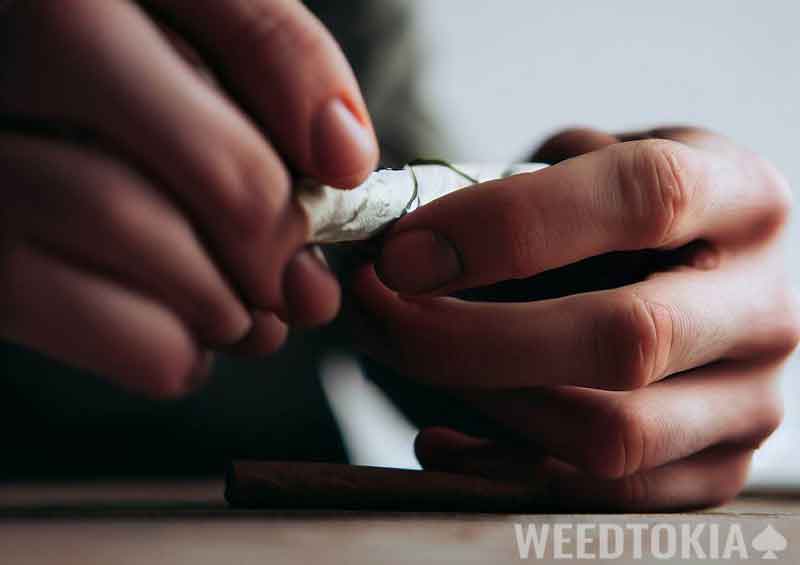
Inhaling, ingesting, and topically applying cannabis and cannabis products are all ways of consuming it. The most common method of inhaling cannabis is by rolling dried cannabis flower in paper and lighting it. The process of rolling a joint may seem complicated, especially to a beginner, but it doesn’t require much.
Rolling a joint requires three things: dried flower, a grinder, and rolling paper. You can make your own tip, or optional filter, from a small rectangle of cardboard or heavy paper, or you can purchase rolling papers that come with premade tips here.
When it comes to enjoying the best strain of cannabis, knowing how to roll the perfect joint is essential. Having a shape that burns evenly will result in smooth smoke. It takes skill to roll a good one, but we’ll be glad to show you how to do it. You will learn how to roll joints in no time when you follow our step-by-step guide below.
Rolling a joint is an essential skill for anyone who smokes weed. A joint that burns too quickly if it is done incorrectly, ruining the entire experience. Follow these simple steps:
4. Create A Filter/Crutch
A filter prevents dried flowers from escaping into your mouth when you inhale and protects your fingers from burning. Rolling papers sometimes come with filters or tips, but you can make your own using a small rectangle of heavy paper.
You can fold one end into a W shape and then curl the rest of the paper around it, or you can roll the entire rectangle into a spiral.
Filters are called crutches or guides because they provide a rigid surface to hold onto while wrapping the paper around the rolled cannabis.
It is possible to make a filter/crutch from a business card if your rolling paper does not come with one. An accordion fold is all that’s needed to make it functional. By using a crutch, excess weed is kept out of your mouth, and it also provides structural support for the joint.
5. Fill The Joint Properly
Various types of rolling papers (organic, unbleached raw, rice, hemp) and sizes are available (double-wide, king, and slim). There are many different shapes and sizes of joints, but the standard one is straight, which provides equal amounts of dried flower throughout the cylinder. Make sure the glue side or shiny side of the paper is facing up before filling it. The filter should be placed at the end of the paper. The dried cannabis should be filled into the paper, with a little space remaining at the end opposite the filter.
With your fingers, insert a small amount of the finely ground cannabis, called shake, into the paper and form the joint.
6. Pack The Joint Correctly
Using your thumbs and index fingers, roll the cannabis inside the non-glued long side of the paper until it is well-packed and forms a cylinder. As a result, rolling is easy and gaps are prevented.
As you shape the dried flower, avoid pressing directly on it. The paper can be rocked back and forth by holding onto the filter.
When rolling a joint, packing is an essential step. Pack the cannabis onto the paper by pinching it between the fingertips and rolling it back and forth. In addition to allowing marijuana to be packed together, this also ensures even distribution. Joints burn evenly when this is done.
7. Roll the Joint correctly
To secure the cannabis and filter, tuck the non-glued edge around the packed cannabis and roll the paper tightly. Secure the side by moistening the glue. The cannabis can also be tamper down with a small tool such as a pen by poking it into the open end. To prevent cannabis from escaping, fold and twist the open end closed.
The way you roll the joint will determine if it’s a good joint or a bad joint. The glued edge should be tacked down on the other end of the paper and the unglued side should be tucked into the roll. Seal it down with some moisture after that.
8. Finish The Joint Correctly
Make sure everything is packed together so that it burns evenly. If necessary, push a small stick or a pen to bring the weed closer together. But don’t overpack, or it will feel clogged when inhaling. Seal the open end of the joint by twirling the extra paper so it resembles a candlewick if the joint will not be lit immediately. The weed can’t fall out of the joint this way. The twisted end will serve as your lighting point when you are ready to smoke.
9. Light The Joint Correctly
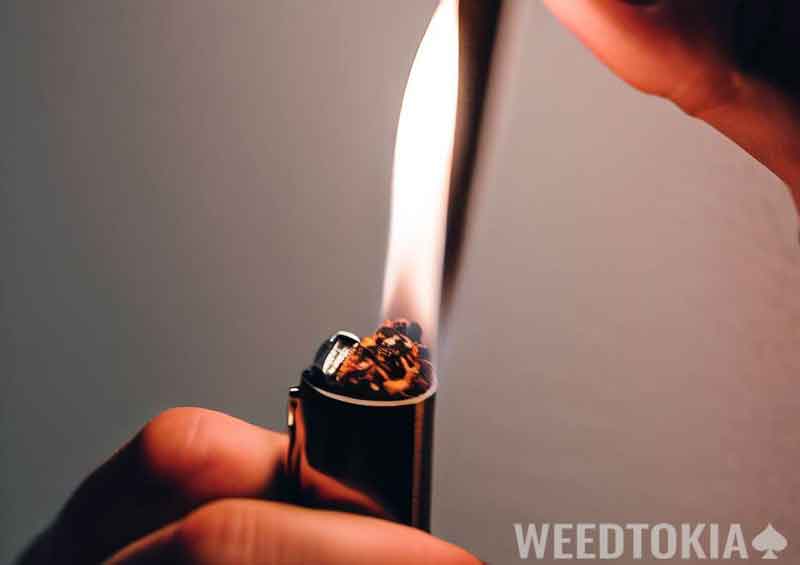
The time has come for you to indulge in your smoke. Now you have nothing between you and that sweet cannabis you just rolled. Lighting it is as simple as lighting a candle. The first time you light up your joint, it tastes the best. Therefore, try to smoke it in one sitting without relighting it. It is bad for the taste to re-light, and we want to make sure you enjoy every single puff.
10. Inhale Correctly
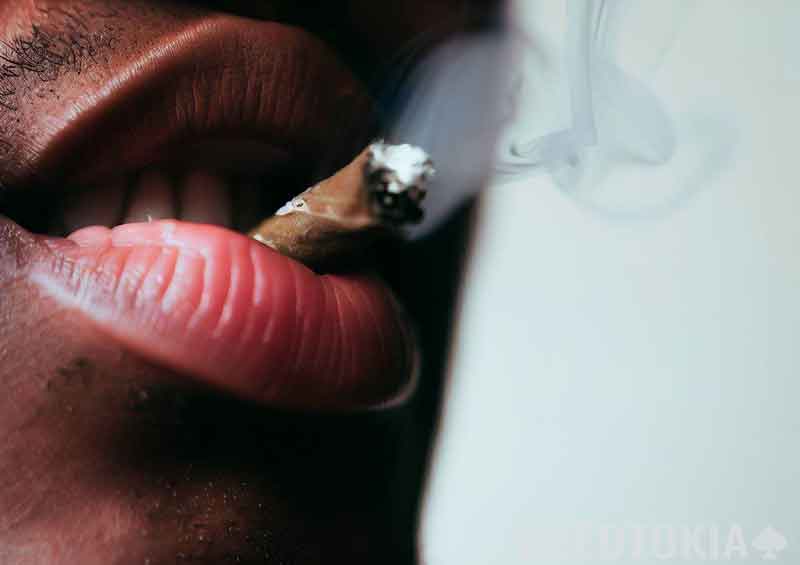
Materials aren’t the only consideration. A joint’s burn rate is also affected by the technique used to smoke it. Some people inhale too deeply, which makes the weed burn faster. You will run out of weed more quickly instead of getting a deeper high.
Take smaller and slower puffs to make the joint burn slower. As a result, the joint will not only last longer, but it also will have a deeper, more profound effect.
11. Try Twaxing
Some smokers use “twaxing” to make a joint burn more slowly. Twaxing is the addition of cannabis concentrate to the joint to prolong its life. You can slow down the burn rate of the joint significantly by adding wax to the outside or mixing it with ground cannabis.
I think the only way to coat your joints and still have it work is to make a “twax joint” through the process of taking a BHO concentrate and molding it into a long cylinder shape. Start with the end of the joint and work your way to the mouth by wrapping it in a corkscrew pattern. You should be able to light it fairly quickly.
Waxing slows down the burn rate as well as increases the concentration of cannabinoids, giving smokers a more intense and long-lasting high.
12. Try Honey or Hash Oil
Adding hash oil to the inside of a joint evenly will help the joint burn evenly, resulting in a stronger high. This thick oil will slow the rate of the burn of the joint. Because it will likely make the smoker much higher, there is a possibility that less will be smoked.
Consider coating the outside part of the joint with honey if you would like to add something that helps with the burn but doesn’t add to the high. Honey acts as a sticking agent to prevent the joint from unwrapping while being smoked, as well as slowing down the burn. Also, it’s delicious.
13 Trying Using Multiple Rolling Papers
Use extra paper to reinforce your joint when rolling. You’ll prevent burn runs from taking over one side of the joint and leaving you with an uneven and undesirable burn by using more than one sheet. Another sheet may also aid in containing airflow, directing it through a tighter space. Using this method will prevent accelerated burning.
14. Try Roach Recycling
In general, the last few remnants of your cannabis are at the end of the joint. Here are a few ways to recycle roaches to make your smoking experience longer.
You can keep your hands safe by using a roach clip or roach stone. You can also extend your roach’s life by putting it in a bowl or water pipe. When all else fails, you can always pick up the last few pieces of that old joint and use them in other ways. That last little bit of ground flower you want to save for the next time you smoke can be stored in your grinder.
Maybe these tips will help you last a little longer the next time you smoke a joint. You can make your joints last longer by using quality cannabis, good rolling papers, and a roller who knows what they are doing.
15. Be Sure to Store Your Weed Properly
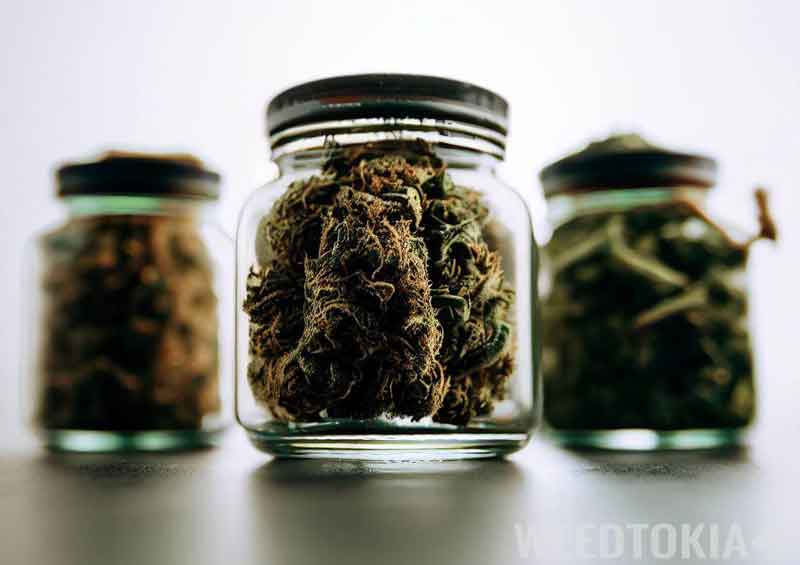
Regardless of how it is used, marijuana works best when it is stored properly. The best way to store weed is in glass containers, especially if they’re airtight. It should not be exposed to direct sunlight or extreme temperatures.
The taste, smell, and potency potential of cannabis is affected by humidity, light, temperature, and oxygen. Keep cannabis away from direct sunlight in a cool, dry place. Freshness can be maintained with hygrometers, humidity packs, and humidors.
Although packaged dried cannabis is not normally marked with an expiration date, there are ways to keep it fresh and preserve each strain’s unique flavors, aromas, and colors, as well as its maximum potency. Here’s how to properly store and preserve your cannabis after purchase:
Moisture/Humidity Control
If there is too much moisture, mold and bacteria will grow, producing unpleasant flavors and odors. In addition, if there isn’t enough humidity in your storage container, the trichomes that contain the terpenes and cannabinoids will break down, and the essential oils will dry out.
Temperature Control
Keep your cannabis below 25°C to reduce the chance of mold growing, so it’s best to store it below that temperature.
Airflow Control
The airflow in your storage container is tricky to control, but it will increase the rate of degradation, and a lack of it will affect the humidity, particularly if the cannabis is not quite dry, to begin with.
Light Exposure Control
The most important factor in preserving dried cannabis is limiting its exposure to light. Simply storing cannabis products away from direct sunlight will prevent them from breaking down too quickly.
Create a Shareable Joint
You’ll always have a longer experience if you combine quality and quantity. Try rolling larger joints (and more of them) if you want your smoke sash to last longer.
Share your joint with some friends for an even better experience. By doing this, you will not only avoid having to relight it later, but you will be able to enjoy its aroma and effects while you wait between turns. Last, but not least, it’s a lot more fun to enjoy the high with your friends. You’re in for a lot of fun! Sharing is caring, man!
Storing Cannabis For Long Burns
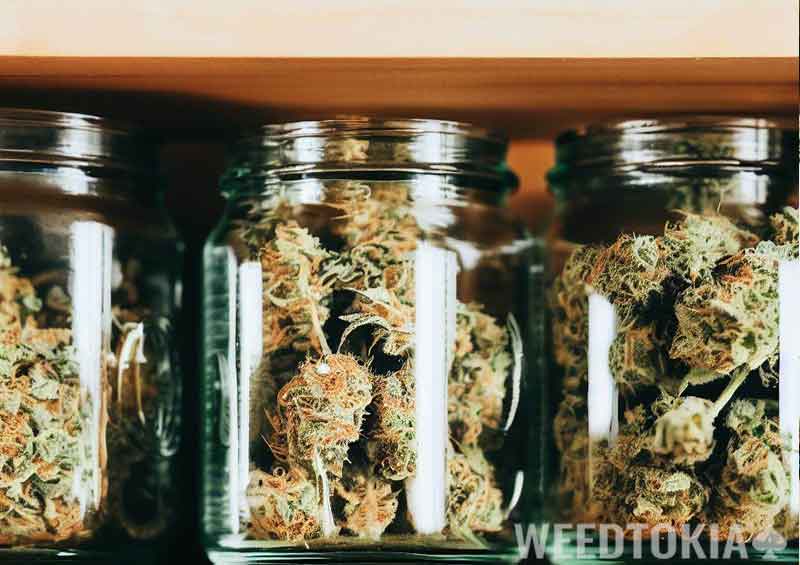
The best place to store cannabis is a cool, dry location, such as a low shelf or basement. Make sure it is in a secure container and out of reach of children and pets and in lockable containers if possible. Avoid plastic, as it can have a static charge that attracts trichomes right off your bud.
You should not store dried flower in the fridge, which has fluctuating temperatures and moisture that can lead to mold growth. Freezing is also out, as low temperatures can cause trichomes to become brittle and fall into the bottom of your container.
If you are storing cannabis products like oils or capsules, please follow the manufacturer’s instructions beforehand. If you store anything in a refrigerator, make sure it is clearly marked.
When storing cannabis, there are many accessories available to help you track elements, such as moisture, humidity, and oxygen.
You should not use tobacco humidors to store your cannabis since they are often made of cedar and can add oils to your product. If, however, you choose to use a cedar humidor, you can avoid direct contact between the wood and the dried flowers by using additional products such as a glass storage jar.
It is important to do your research when storing cannabis because there are a lot of factors to take into consideration. It’s best not to use cannabis that has no aroma or smells “off” – these are signs that the quality has deteriorated.
It is also very important for the weed to be properly ground if you want the joints to burn slowly. Large weed pieces, for example, are more difficult to burn evenly and can have a less pleasant taste. Make sure all pieces of the cannabis are similar in shape before rolling. A fine grind of the weed is ideal, but it should not be powdered. More on that below.
TLDR: Making The Blunt Burn Slow
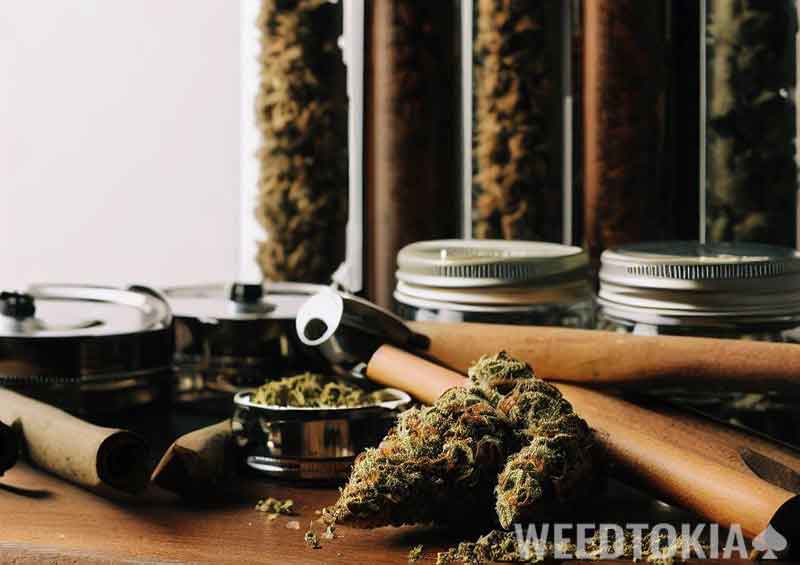
- Roll the joint properly to maximize the effects of the weed you’re smoking and get that slow burn.
- Store the weed in glass jars or other glass containers. Keep it away from sunlight and extreme temperatures. Basements are ideal.
- Mind the moisture, humidity, and temperature levels of the containers. This will maintain the quality of the weed.
- Use thinner rolling papers such as rice papers. Thin papers burn slower than thick papers, giving you a longer smoking experience.
- Grind the weed evenly and pack the joint as tight as possible. Roll it correctly to get the best burn.
Joints aren’t as complicated as they seem, even though there are a lot of things that go into making them burn slower. As well as being easy to implement, these steps are also likely to improve the burn rate and overall experience of smoking a joint significantly.
Most importantly, remember to enjoy the process and take it easy.
Wrap Up:
That does it for this article. If you have any tips or tricks to make joints burn slower, let us know in the comments below.